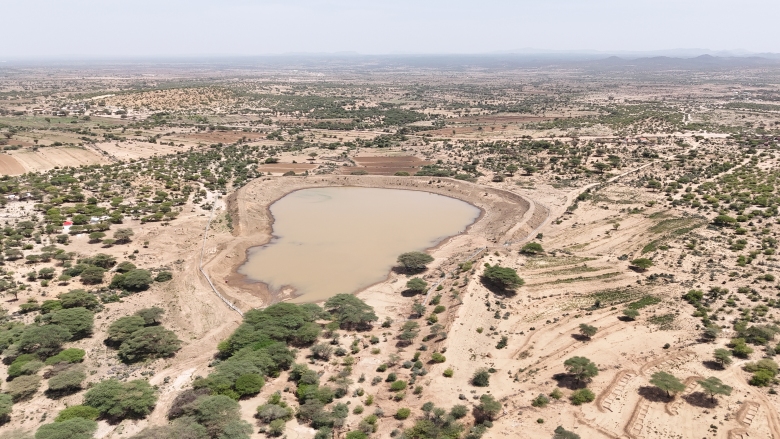Cholera outbreak devastates Sudan refugee camps – Al Jazeera

Humanitarian Crisis in Darfur: A Failure to Uphold Sustainable Development Goals
A severe cholera outbreak in the refugee camps of Tawila, western Sudan, highlights a catastrophic failure to meet multiple Sustainable Development Goals (SDGs). The crisis, fueled by ongoing conflict, has resulted in a complete breakdown of essential services, jeopardizing the health, safety, and well-being of hundreds of thousands of displaced persons.
Critical Setbacks for SDG 3: Good Health and Well-being
The rapid spread of cholera represents a direct assault on the fundamental right to health as outlined in SDG 3. The situation is characterized by:
- Disease Proliferation: Over 1,500 cholera cases have been treated in Tawila in the past month, with UN figures indicating 2,140 infections and at least 80 deaths across Darfur by late July.
- Vulnerable Populations: Children are disproportionately affected, with UNICEF reporting approximately 300 child infections in Tawila and over 640,000 children under five at risk across North Darfur.
- Inadequate Health Infrastructure: Health facilities are overwhelmed. A 160-bed cholera treatment centre established by Doctors Without Borders (MSF) is already operating beyond capacity, demonstrating the gap between need and available resources.
Collapse of SDG 6: Clean Water and Sanitation
The cholera epidemic is a direct consequence of the complete failure to provide access to clean water and sanitation, a core target of SDG 6. Displaced populations are forced to rely on unsafe practices and contaminated sources.
- Contaminated Water Sources: Refugees depend on boiling water from contaminated natural sources or scarce, shallow wells for drinking, cleaning, and disinfection.
- Lack of Sanitation: In the makeshift shelters, basic hygiene practices such as handwashing with soap are nearly impossible, creating an environment where the highly contagious bacterial infection thrives.
- Environmental Threats: The approaching rainy season threatens to exacerbate the crisis by causing floods that will further contaminate the limited water supplies.
Impact on SDG 1, SDG 2, and SDG 11
The conflict has reversed progress on several interconnected goals, creating a multi-faceted humanitarian disaster.
- SDG 1 (No Poverty) & SDG 11 (Sustainable Cities and Communities): Nearly half a million people have been displaced from cities like el-Fasher, forced into extreme poverty and living in unsustainable, hastily erected camps that lack any basic infrastructure.
- SDG 2 (Zero Hunger): The UN has issued repeated warnings about severe food shortages and a growing hunger crisis in Tawila, compounding the health emergency and pushing the population closer to famine.
Breakdown of SDG 16 and SDG 17: Peace, Justice, and Partnerships
The crisis is fundamentally rooted in the absence of peace and the obstruction of humanitarian efforts, undermining the principles of SDG 16 and SDG 17.
- Conflict as the Driver (SDG 16): The war between the Sudanese army and the paramilitary Rapid Support Forces (RSF) is the direct cause of the world’s largest displacement and hunger crises, representing a total failure of peace and justice.
- Obstruction of Aid (SDG 17): Efforts by international partners like MSF and UNICEF are severely hampered. The blockage of aid convoys, particularly by the RSF, paralyzes the humanitarian response and demonstrates a breakdown in the global partnership for sustainable development.
SDGs Addressed in the Article
- SDG 2: Zero Hunger
- SDG 3: Good Health and Well-being
- SDG 6: Clean Water and Sanitation
- SDG 16: Peace, Justice and Strong Institutions
Specific SDG Targets Identified
-
SDG 3: Good Health and Well-being
- Target 3.3: End epidemics of water-borne diseases. The article’s central theme is the cholera outbreak, a water-borne disease, “ripping through the camps of Tawila.” It details the rapid spread, with “more than 1,500 cases” treated in Tawila and “2,140 infections and at least 80 deaths across Darfur.”
- Target 3.d: Strengthen capacity for early warning and management of health risks. The article highlights a failure in managing the health crisis. The outbreak is described as overwhelming the available resources, with MSF’s treatment centers being “already overwhelmed,” indicating a lack of capacity to manage the health risk effectively.
-
SDG 6: Clean Water and Sanitation
- Target 6.1: Achieve universal access to safe and affordable drinking water. The article explicitly states that access to safe water is non-existent for the refugees. They are forced to use contaminated sources: “Water is often fetched from nearby natural sources – often contaminated – or from one of the few remaining shallow, functional wells.”
- Target 6.2: Achieve access to adequate and equitable sanitation and hygiene. The text points to a severe lack of hygiene facilities. UNICEF advises refugees to “wash their hands with soap,” but the article notes that “even those meagre precautions are out of reach,” directly indicating a failure to meet this target.
-
SDG 2: Zero Hunger
- Target 2.1: End hunger and ensure access to safe, nutritious, and sufficient food. The article mentions that the conflict has created the “world’s largest… hunger crises.” It specifically notes that “The UN has repeatedly warned of food shortages in Tawila, where aid has trickled in, but nowhere near enough to feed the hundreds of thousands who go hungry.”
-
SDG 16: Peace, Justice and Strong Institutions
- Target 16.1: Significantly reduce all forms of violence and related death rates. The entire crisis is a direct result of the ongoing conflict. The article states the war between the “paramilitary Rapid Support Forces (RSF)” and “Sudan’s army” has “killed tens of thousands” and is the root cause of the displacement and subsequent cholera outbreak.
Implied Indicators for Measuring Progress
-
For Target 3.3 (End epidemics)
- Incidence of water-borne diseases: The article provides specific numbers that serve as direct indicators of the cholera incidence rate. These include “more than 1,500 cases have been treated in Tawila,” “about 300 of the town’s children have contracted the disease,” and “2,140 infections and at least 80 deaths across Darfur.”
-
For Target 6.1 (Access to safe water)
- Proportion of population using safely managed drinking water services: The article implies this indicator is near zero. The description of people having “nothing but the water they can boil” and fetching it from “nearby natural sources – often contaminated” serves as a qualitative indicator of the complete lack of safe water services.
-
For Target 2.1 (End hunger)
- Prevalence of food insecurity: The article implies a high prevalence of food insecurity with statements like “hundreds of thousands who go hungry” and the UN’s warnings of “food shortages in Tawila.” The number of people displaced (“Nearly half a million people sought shelter”) who require food aid is also an implied indicator.
-
For Target 16.1 (Reduce violence)
- Number of conflict-related deaths and displaced persons: The article provides data points for this indicator, stating the conflict has “killed tens of thousands” and created the “world’s largest displacement… crises,” with “nearly half a million people” seeking shelter in the Tawila area alone.
Summary of SDGs, Targets, and Indicators
| SDGs | Targets | Indicators Identified in the Article |
|---|---|---|
| SDG 3: Good Health and Well-being | Target 3.3: End epidemics of water-borne diseases. | Incidence rate of cholera: “more than 1,500 cases have been treated in Tawila,” “2,140 infections and at least 80 deaths across Darfur.” |
| SDG 6: Clean Water and Sanitation | Target 6.1: Achieve universal access to safe and affordable drinking water. | Lack of access to safe water: “Water is often fetched from nearby natural sources – often contaminated.” |
| SDG 6: Clean Water and Sanitation | Target 6.2: Achieve access to adequate and equitable sanitation and hygiene. | Lack of hygiene facilities: Advice to “wash their hands with soap” is noted as an “out of reach” precaution. |
| SDG 2: Zero Hunger | Target 2.1: End hunger and ensure access to food. | Prevalence of food insecurity: “hundreds of thousands who go hungry” due to “food shortages.” |
| SDG 16: Peace, Justice and Strong Institutions | Target 16.1: Significantly reduce all forms of violence. | Conflict-related deaths and displacement: Conflict “has killed tens of thousands” and created the “world’s largest displacement… crises.” |
Source: aljazeera.com

What is Your Reaction?
 Like
1
Like
1
 Dislike
1
Dislike
1
 Love
1
Love
1
 Funny
0
Funny
0
 Angry
0
Angry
0
 Sad
0
Sad
0
 Wow
0
Wow
0










/campaigns/16-days-of-activism-against-gender-based-violence/pr-web-banner.tmb-1200v.jpg?sfvrsn=8cc7b98e_1#)





































































